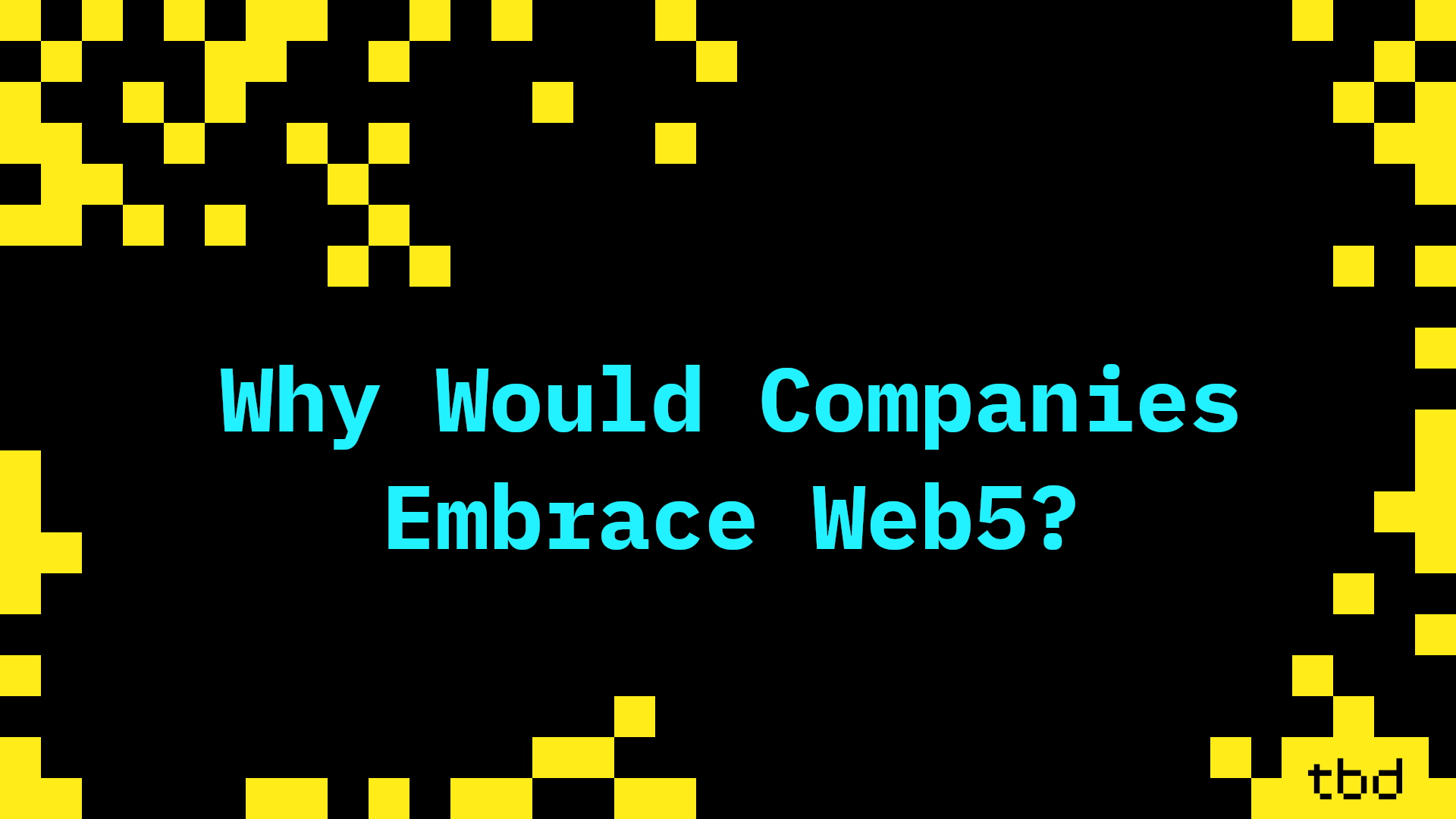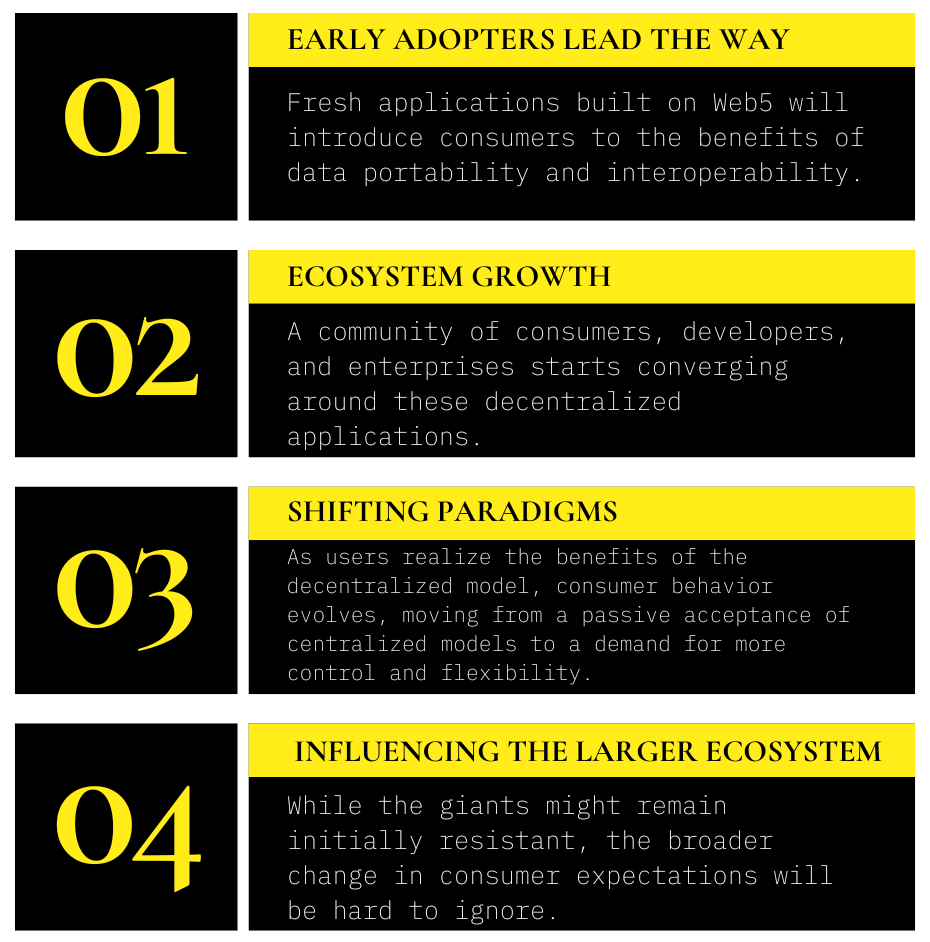Web5: A Fresh Blueprint for App Development

Web5 prescribes that users maintain control of their content by decoupling their identity and data from the applications that they use. I'm frequently asked why major companies, who have made billions of dollars off of our data, would buy into this model.
I challenge you to think of this from a different perspective. In the ever-evolving technological landscape, Web5 is not a call to convince the giants to relinquish control over our data, but about expanding what's possible on the web.
A decentralized app model might not immediately grab the attention of today's market leaders, but it opens up exciting possibilities for the innovators of tomorrow, particularly around open data models.
The Incentive
Web5 enables a web that eliminates the traditional barriers of centralized data control. Developers who resonate with this philosophy, or those intrigued by the many advantages of a decentralized approach, will find Web5 to be a vast playground.
Let's take AI-driven applications as an example. Through today's lens, it may appear that data equates to unparalleled value and thus, retaining control of that data would be attractive. However, as AI technologies evolve, they increasingly depend on rich, diverse, and open datasets — the kind that are best obtained by participating in a more open, decentralized data ecosystem.
But this shift isn't limited to AI. Web5 creates an ideal setting for innovation for all sorts of companies from many different verticals. Up-and-coming apps, unburdened by legacy systems and the status quo, can fully embrace the benefits of Web5, paving the way for a new era of web applications. This unique advantage allows them to immediately offer something that top companies don't: the ability for users to take their data with them.
Consumer Expectations
Here’s where things get interesting. As early adopters interact with and understand the value of applications built on Web5, their demands will shift. They'll start to expect more portability and interoperability of their data between applications across the web. In time, this change in expectations will exert pressure even on larger players to adapt or offer similar flexibility.
We’ve seen this unfold with products like Google Search and StackOverflow in the wake of ChatGPT. These players have dominated their respective markets for quite some time. Not even a year ago, the thought of a new app threatening these business models seemed improbable... comical even. And yet, almost overnight, we saw consumers’ expectations change. All of a sudden, asking a question and clicking through multiple links to get to the answer felt outdated. Dealing with snarky users in order to get technical help no longer seemed worth the trouble.
This new expectation forced these companies, who are the market leaders in their spaces, to reassess their business models and innovate accordingly in order to appease their user base.
The Journey to Adoption
Here’s how I envision the journey of Web5 adoption.

Evolution
It’s worth emphasizing that Web5 isn’t about replacing the old with the new, but an invitation to explore a new application model. It's about enabling a world where data isn't hoarded, but shared, and where developers can create applications free of traditional restraints.
In this unfolding story of the web's evolution, it's not the dominant players who will dictate the narrative. Instead, the stage is set for those who see beyond the status quo, for applications that redefine what's possible, and for consumers who champion their own data rights.
Web5 is less about disruption and more about evolution; the future awaits those brave enough to embrace it.